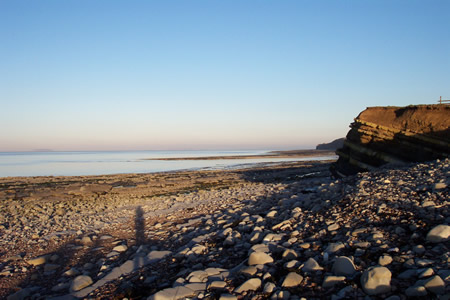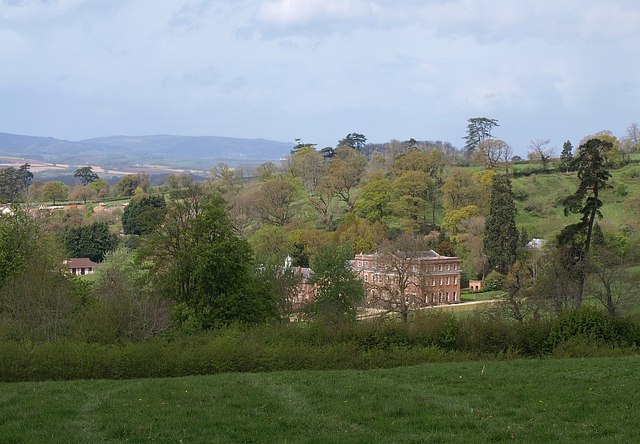The final Chapter of In Pursuit does what it ought: it contains elements of the whole before bringing the book to a satisfying end with a surprising image. It is in fact a reprise: he had arrived at Kilve, his destination, the night before the chapter opens, but is having a look further afield before turning for a train station and home.
quantocksonline |
| Kilve Beach |
There is a long diversion, similar to the early one on clay pipes, on the subject of waterproofs. Or rather not-waterproofs. We have certainly an advantage over Thomas as we do have garments that are both waterproof, light, easy to walk in and don't tear - something he thought would never be possible.
And a shorter one about local biscuits especially Half-Moon biscuits.
Birds - A thrush, starlings and 'The end of rain as I hoped, was sung away by missel-thrushes in the roadside oaks, by a chain of larks' songs which much have reached all over England.' Seagulls, rooks.
Missel-thrush

Remarkable individuals - road-menders: 'the corduroys of one were stained so thoroughly by the red mud of the Quantocks, and shaped so excellently by wear to his tall spare figure, that they seemed to be one with the man.'
the 'two old men sat in the small settle at the fireside talking of the cold weather, for so they deemed it. Bent, grinning old men they were, using rustic, deliberate grave speech.'
Flowers -'tall arum, nettle, and celandine, and one plant of honesty from the last cottage garden.'
 Honesty
HonestyAt the same time he is travelling, looking west.
 geograph.org geograph.org |
Crowcombe Court: 'the sun was bright.' Now a wedding venue as are very many of the properties on his route. |
It was at the inn there he met the two old men. Then on to Cothelstone.

'I saw through the trees the gray mass of Cothelstone Manor-house beside its lake, and twelve miles off in the same direction the Wellington obelisk on the Black Down Hills. A stone seat on the other side of the trees commands both the manor house beneath and the distant obelisk. The seat is in an arched-over recess in the thickness of a square wall of masonry, six or seven feet in height and breadth. A coeval old hawthorn, spare and solitary, sticks out from the base of the wall. The whole is surmounted by a classic stone statue of an emasculated man larger than human, nude except for some drapery falling behind, long-haired, with left arm uplifted, and under its feet a dog; and it looks straight over at the obelisk. I do not know if the statue and the obelisk are connected, nor, if so, whether the statue represents the Iron Duke, his king, or a classic deity; the mutilation is against the last possibility. Had the obelisk not been so plainly opposite, I should have taken the figure for some sort of a god, the ponderous, rustic-classic fancy of a former early nineteenth-century owner of Cothelstone Manor. The statue and masonry, darkened and bitten by weather, in that high, remote, commanding place, has in any case long outgrown the original conception and intention, and become a classi-rustical, romantic what-you-please, waiting for its poet or prose poet. '
 |
| Cothelstone Hill
'a dome of green and ruddy grasses in the south-east, sprinkled with thorn trees and capped by the blunt tower of a beacon. The primrose roots hard by me had each sufficient flowers to make a child's handful..
Turning to the left again, when the signpost declared it seven and three-quarters miles to Bridgewater, I found myself on a glorious sunlit road without hedge, bank, or fence on either side, proceeding through fern, gorse, and ash trees scattered over mossy slopes.'
The final pages are too evocative, too expressive of the spirit of the whole, to cut. The bluebells, dropped by the side of the road, the rainbow, the distant views to Wales and the close -'The million gorse petals were like flames sown by the sun.'
The Grave of Winter.
Here they are as Thomas would have proof-read them in 1913, his saddest, most desperate year. What courage and strength he had.
------------------------------------------------------------------------------------------------------------------------------------------
|



.jpg)

Nice blog and article, thanks for sharing.
ReplyDeleteSpeaking of the grave of Winter, and Easter Monday, what an odd kind of foreshadowing. He had to journey eastward to find release from his own personal Winter.
ReplyDeleteThank you for drawing my attention to that. Yes, not the lovely west but the tragic east. All best wishes to you.
DeleteThis comment has been removed by a blog administrator.
ReplyDeletemy company Learn More Here pop over to these guys dolabuy ysl click this link now helpful site
ReplyDelete